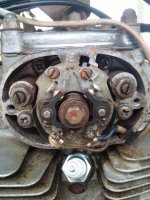jtaylor1148
New Member
As the spring starts to begin, and allergy season is at critical mass here in Alabama with a yellow coating on everything, I am really itching o get the bike out on the road for the first time (literally). But anyway everything is in order, valves checked, timed, carbs synced, and finally got a tag. But the bike runs really rich, staying at high RPMS and falling back down slowly, and really only idles below 1800 with the choke engaged. So I was wondering, what is the simplest way to, "lean," it out? I may not be using the correct terminology so excuse me if I am, I just need not so much fuel so it goes a little less bang bang when I dont need to. Thanks 





